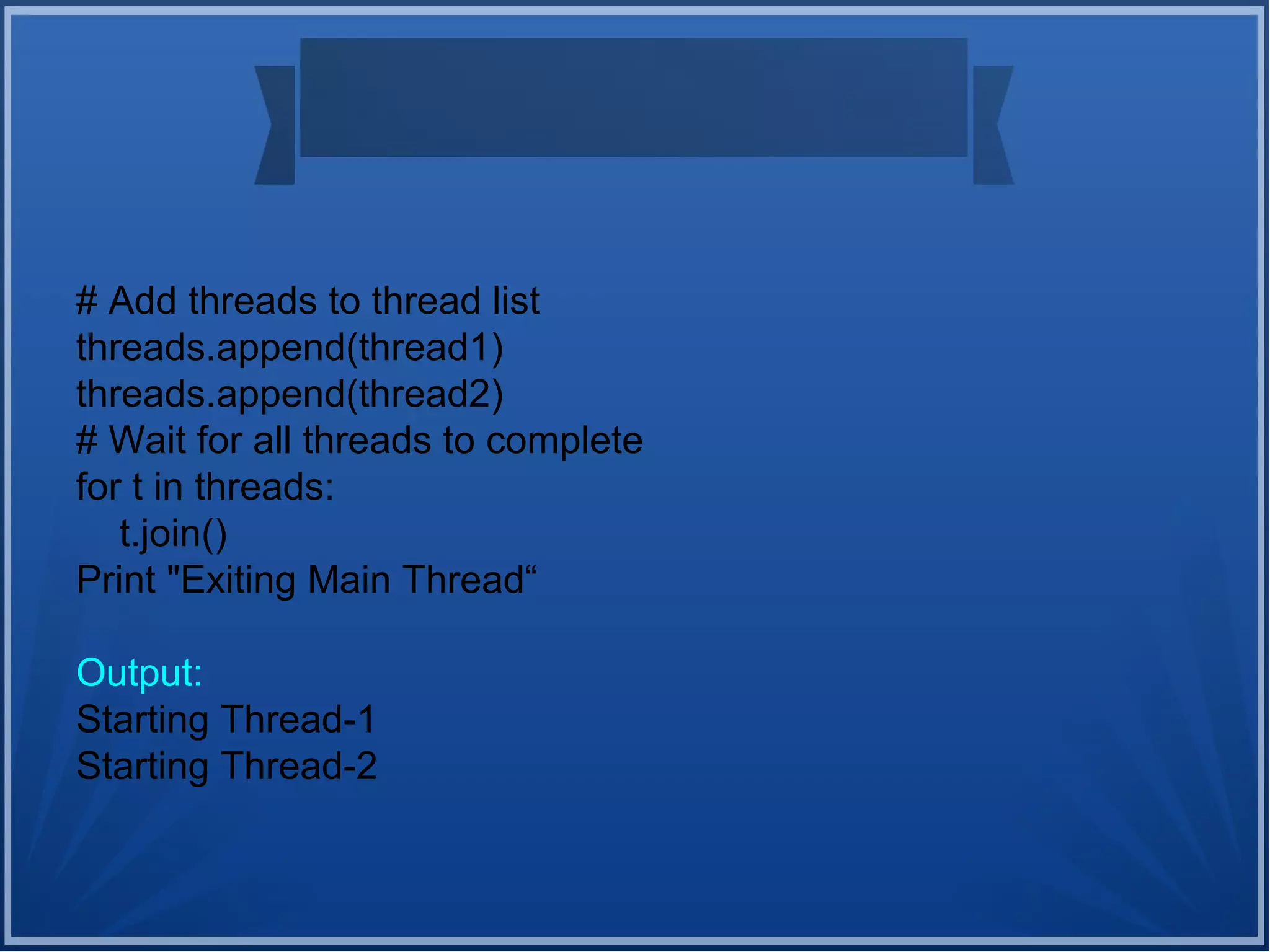- Python allows programmers to write multi-threaded programs using its threading module. This allows running multiple threads concurrently to perform asynchronous tasks or operations in parallel.
- The threading module provides Thread class which represents a thread of execution. New threads can be created by subclassing Thread and overriding its run method. start() method launches the execution of the thread.
- Synchronization between threads is important to prevent race conditions. The threading module provides Lock objects to synchronize access to shared resources.
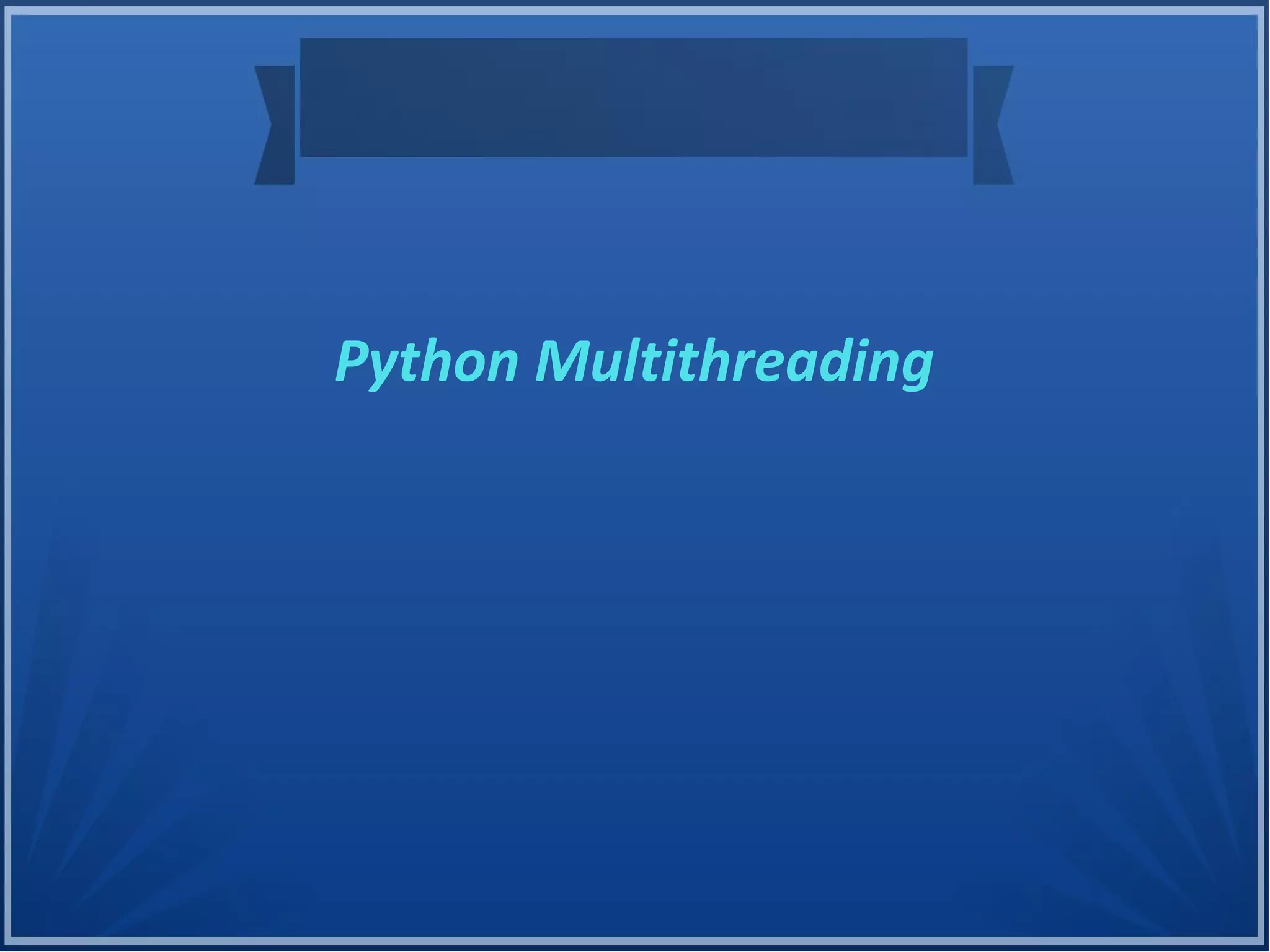
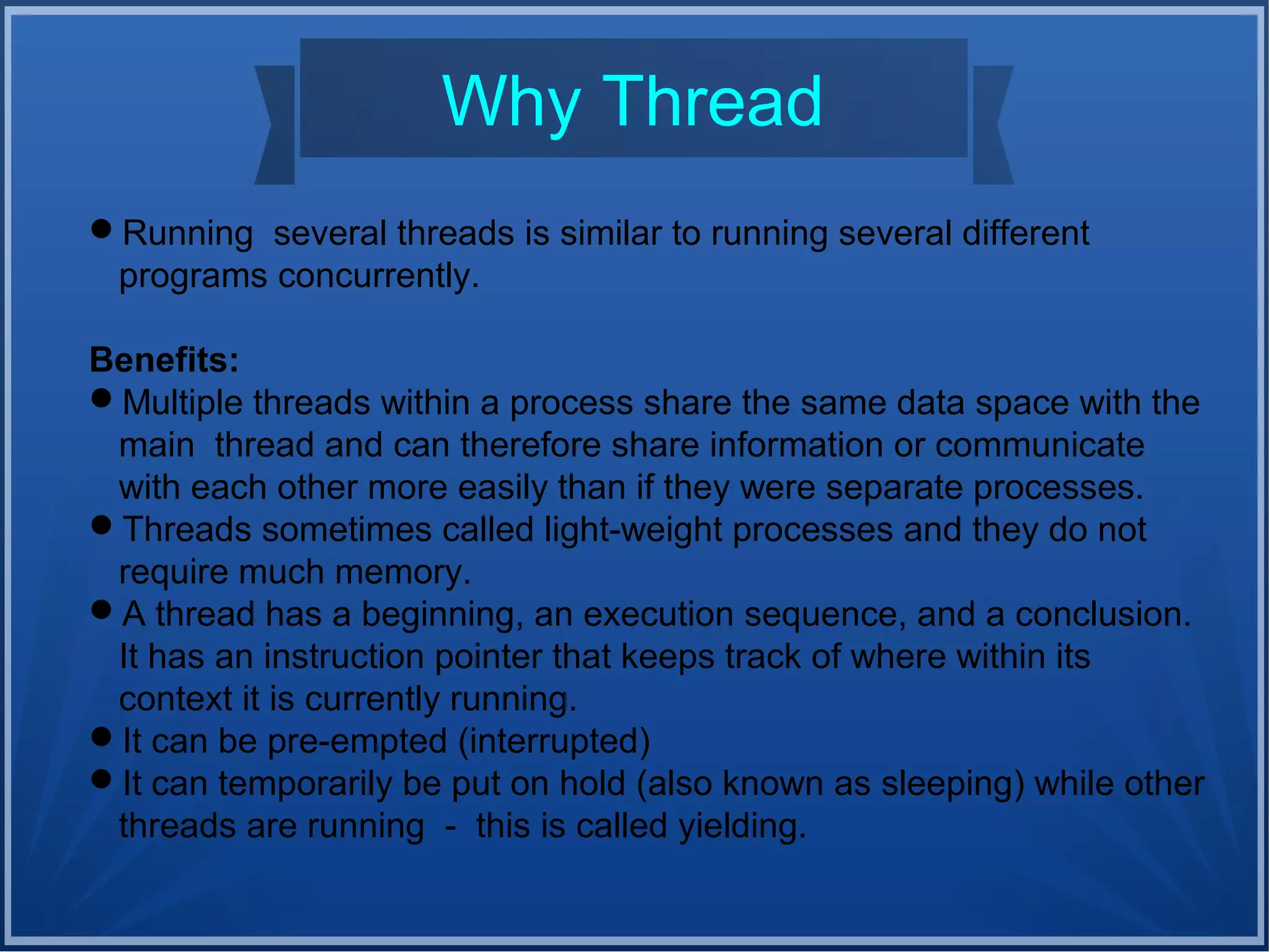
![Starting a New Thread:
Syntax:
thread.start_new_thread ( function, args[, kwargs] )
Example:
import thread
import time
# Define a function for the thread
def print_time( threadName, delay):
count = 0
while count < 5:
time.sleep(delay)
count += 1
print "%s: %s" % ( threadName, time.ctime(time.time()) )](https://image.slidesharecdn.com/pythonmultithreadingsession9-140419054347-phpapp01/75/Python-multithreading-session-9-shanmugam-3-2048.jpg)
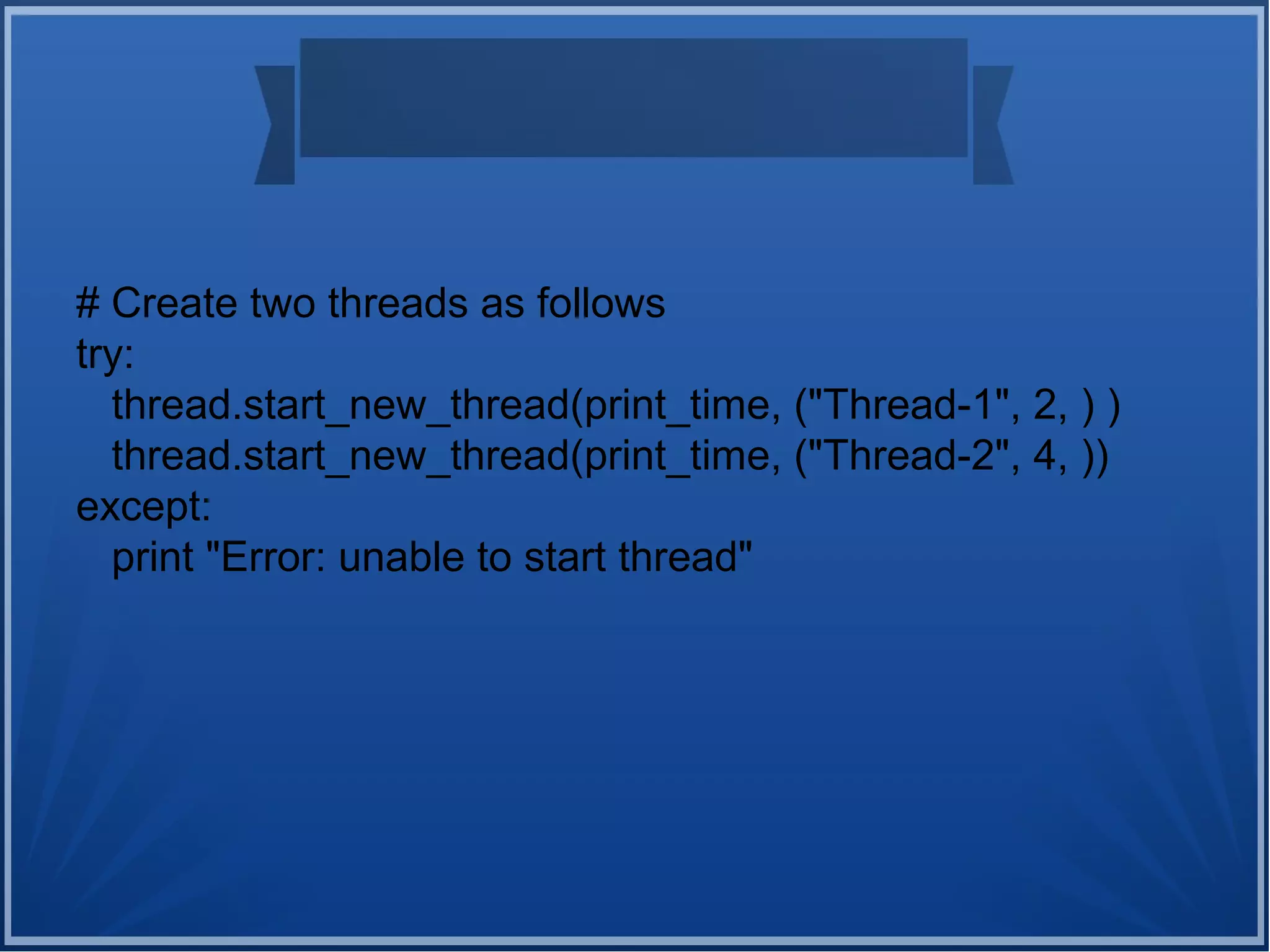
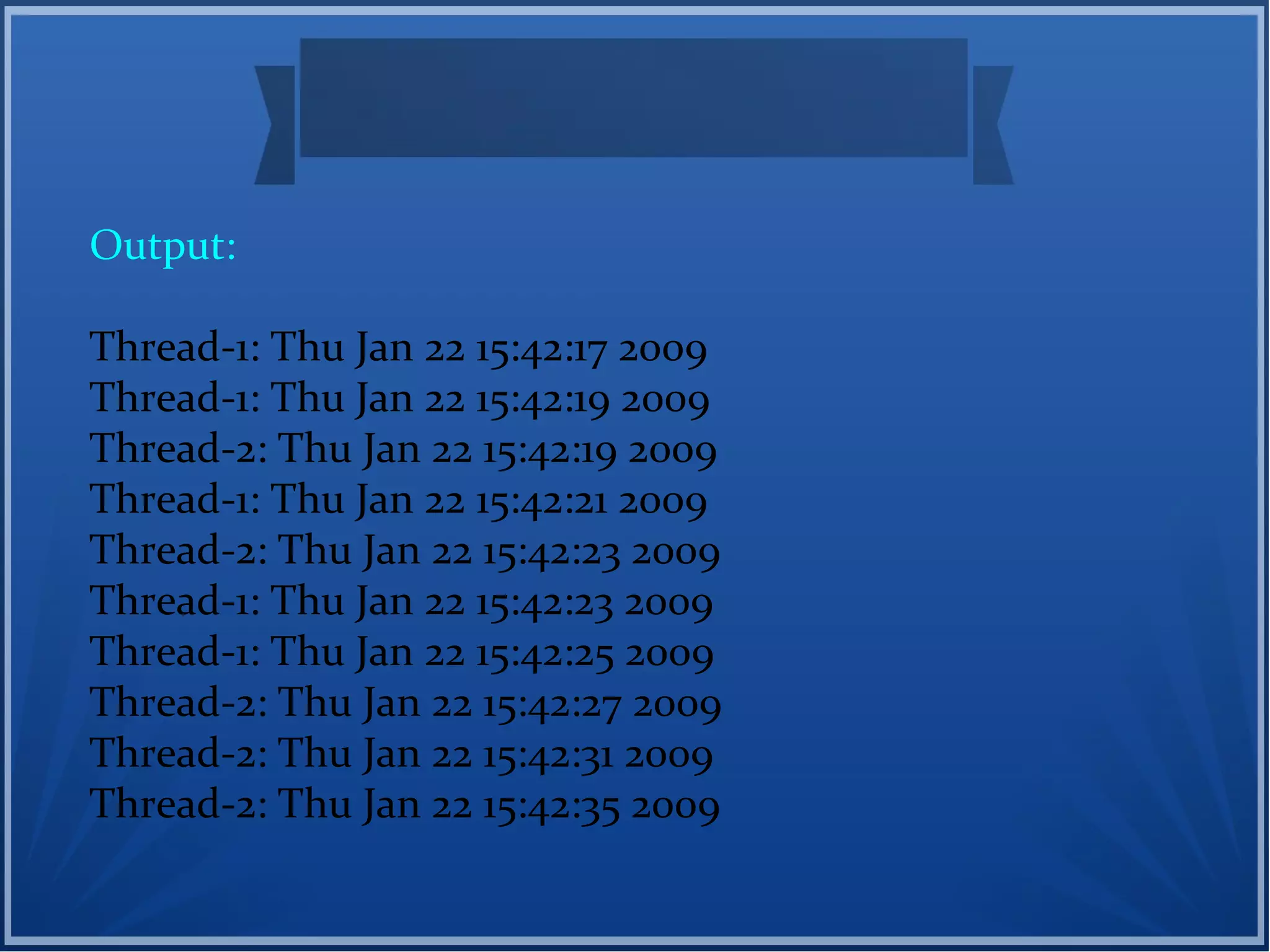

![The methods provided by the Thread class are as follows:
run(): The run() method is the entry point for a thread.
start(): The start() method starts a thread by calling the run
method.
join([time]): The join() waits for threads to terminate.
isAlive(): The isAlive() method checks whether a thread is still
executing.
getName(): The getName() method returns the name of a
thread.
setName(): The setName() method sets the name of a thread.](https://image.slidesharecdn.com/pythonmultithreadingsession9-140419054347-phpapp01/75/Python-multithreading-session-9-shanmugam-7-2048.jpg)
![Creating Thread using
Threading Module
To implement a new thread using the threading module,
need to do the following:
Define a new subclass of the Thread class.
Override the __init__(self [,args]) method to add
additional arguments.
override the run(self [,args]) method to implement what
the thread should do when started.
Once you have created the new Thread subclass, you can
create an instance of it and then start a new thread by
invoking the start(), which will in turn call run() method.](https://image.slidesharecdn.com/pythonmultithreadingsession9-140419054347-phpapp01/75/Python-multithreading-session-9-shanmugam-8-2048.jpg)
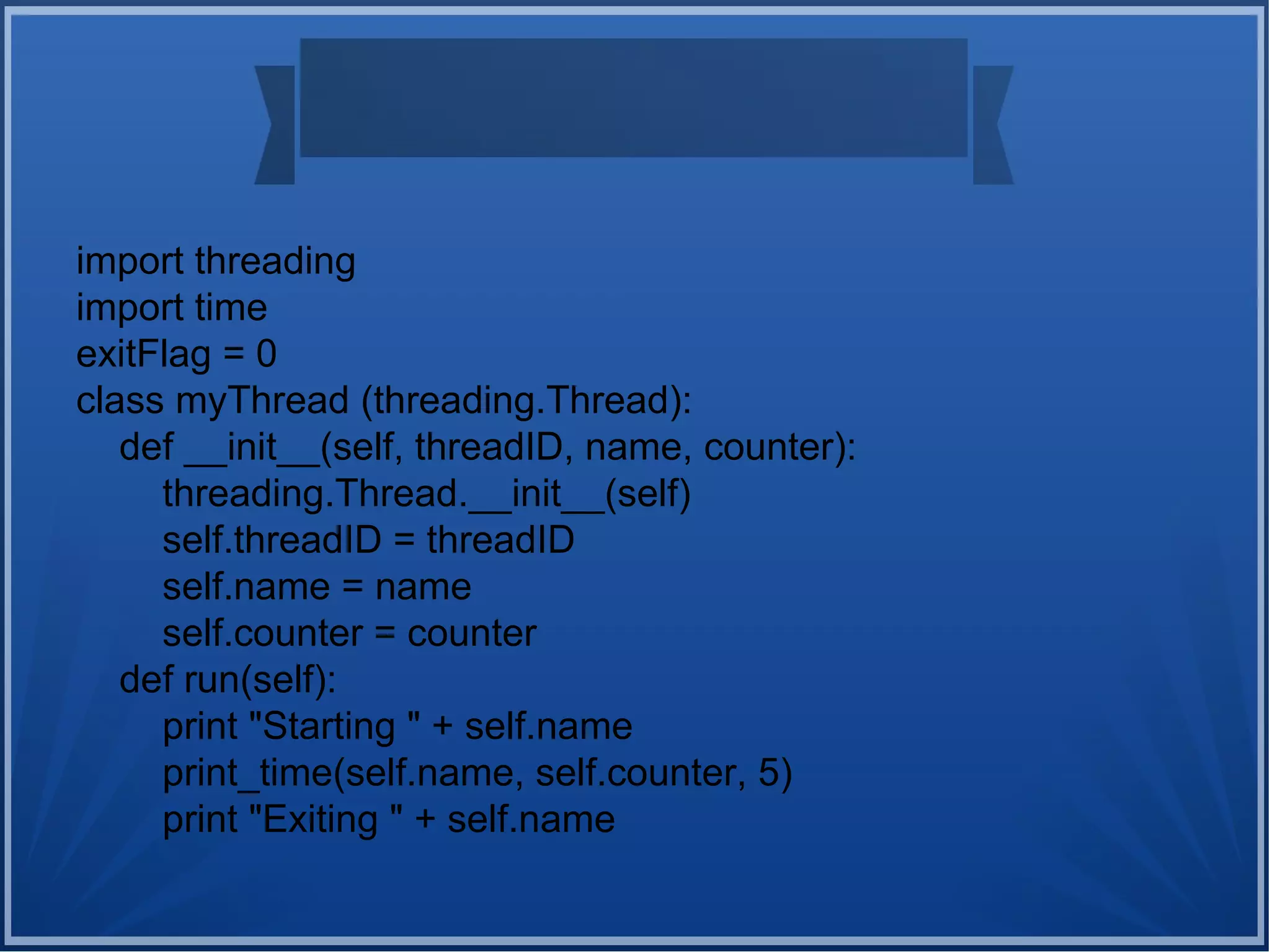
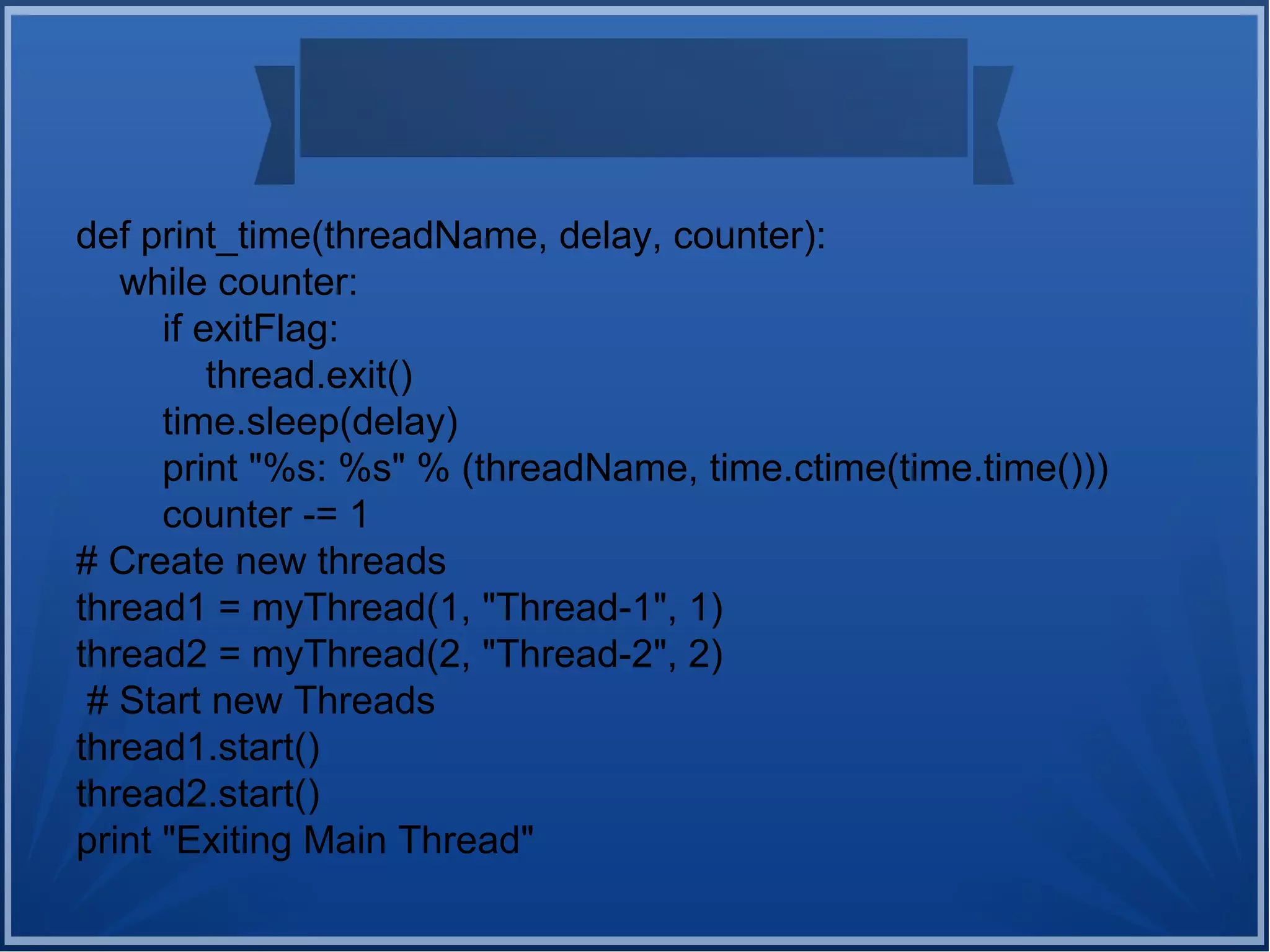
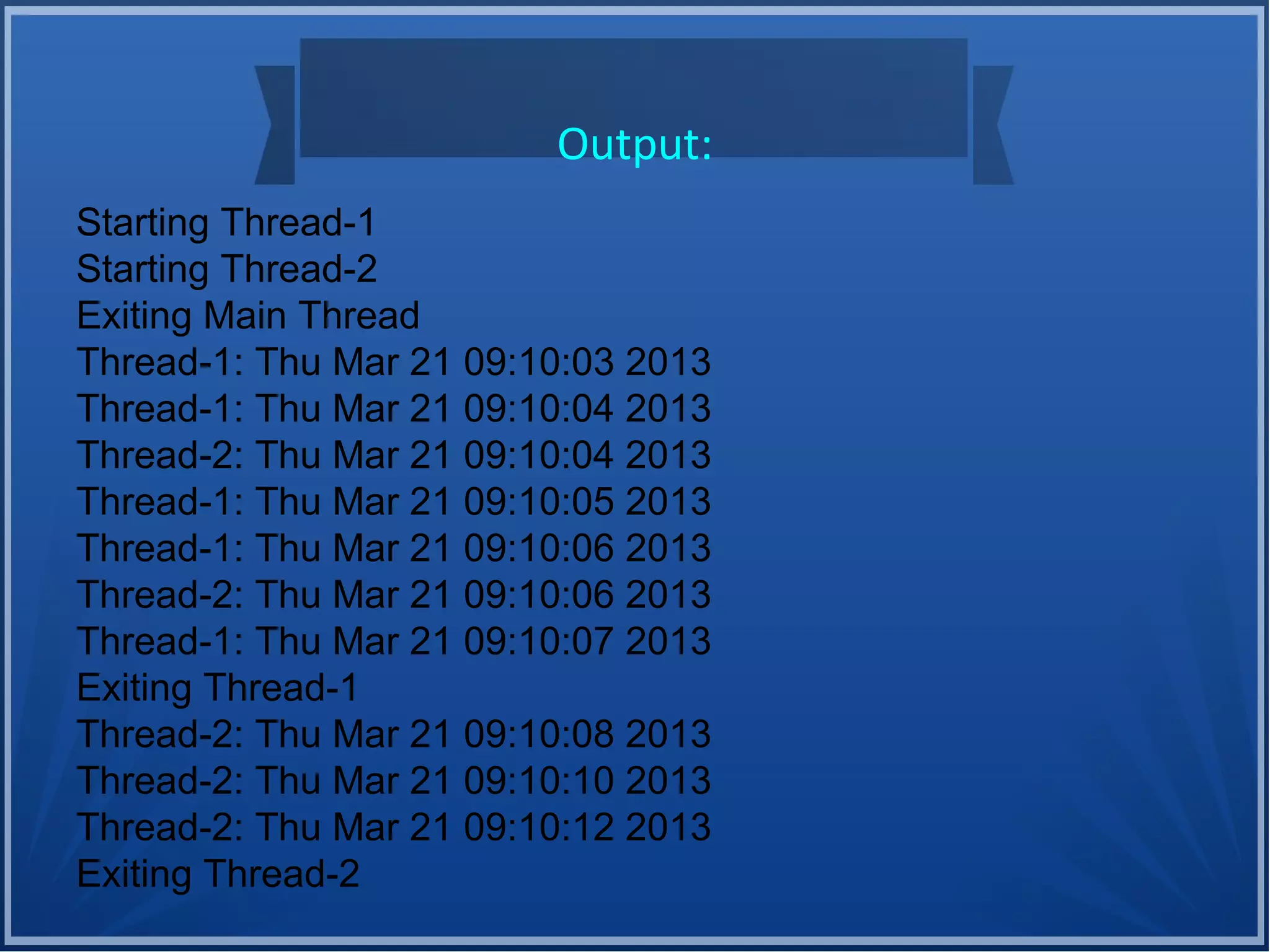
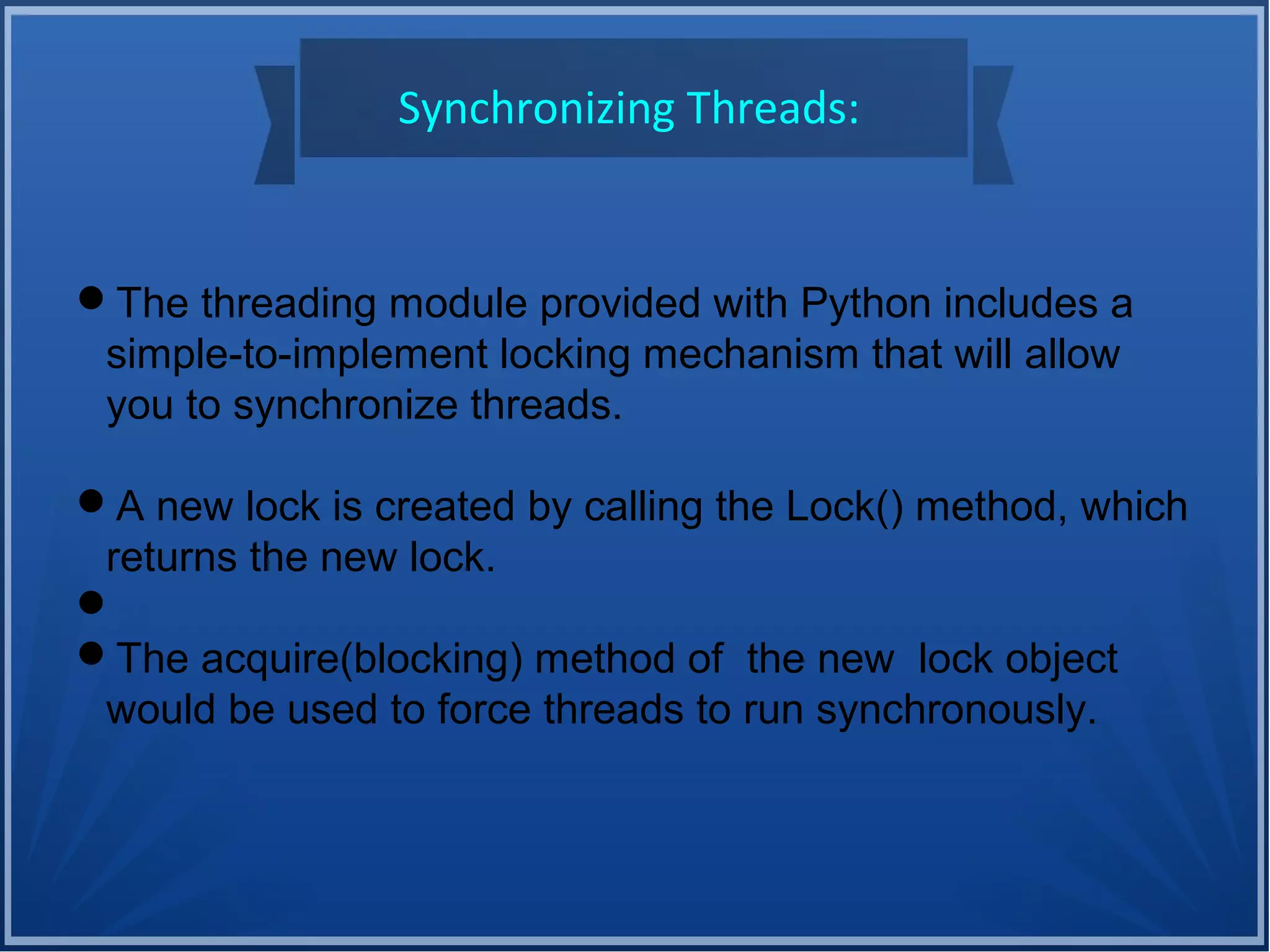
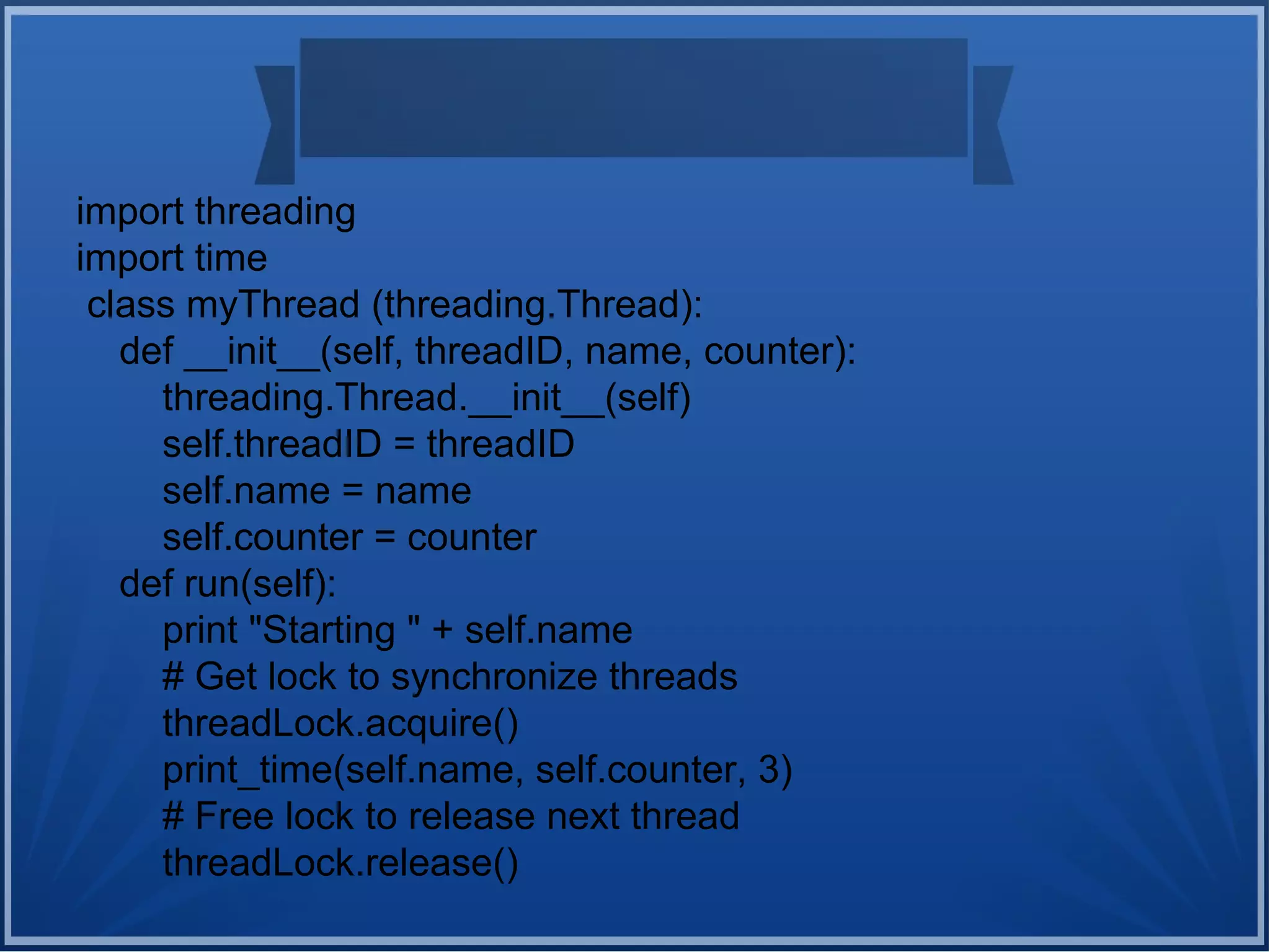
![def print_time(threadName, delay, counter):
while counter:
time.sleep(delay)
print "%s: %s" % (threadName, time.ctime(time.time()))
counter -= 1
threadLock = threading.Lock()
threads = []
# Create new threads
thread1 = myThread(1, "Thread-1", 1)
thread2 = myThread(2, "Thread-2", 2)
# Start new Threads
thread1.start()
thread2.start()](https://image.slidesharecdn.com/pythonmultithreadingsession9-140419054347-phpapp01/75/Python-multithreading-session-9-shanmugam-14-2048.jpg)
